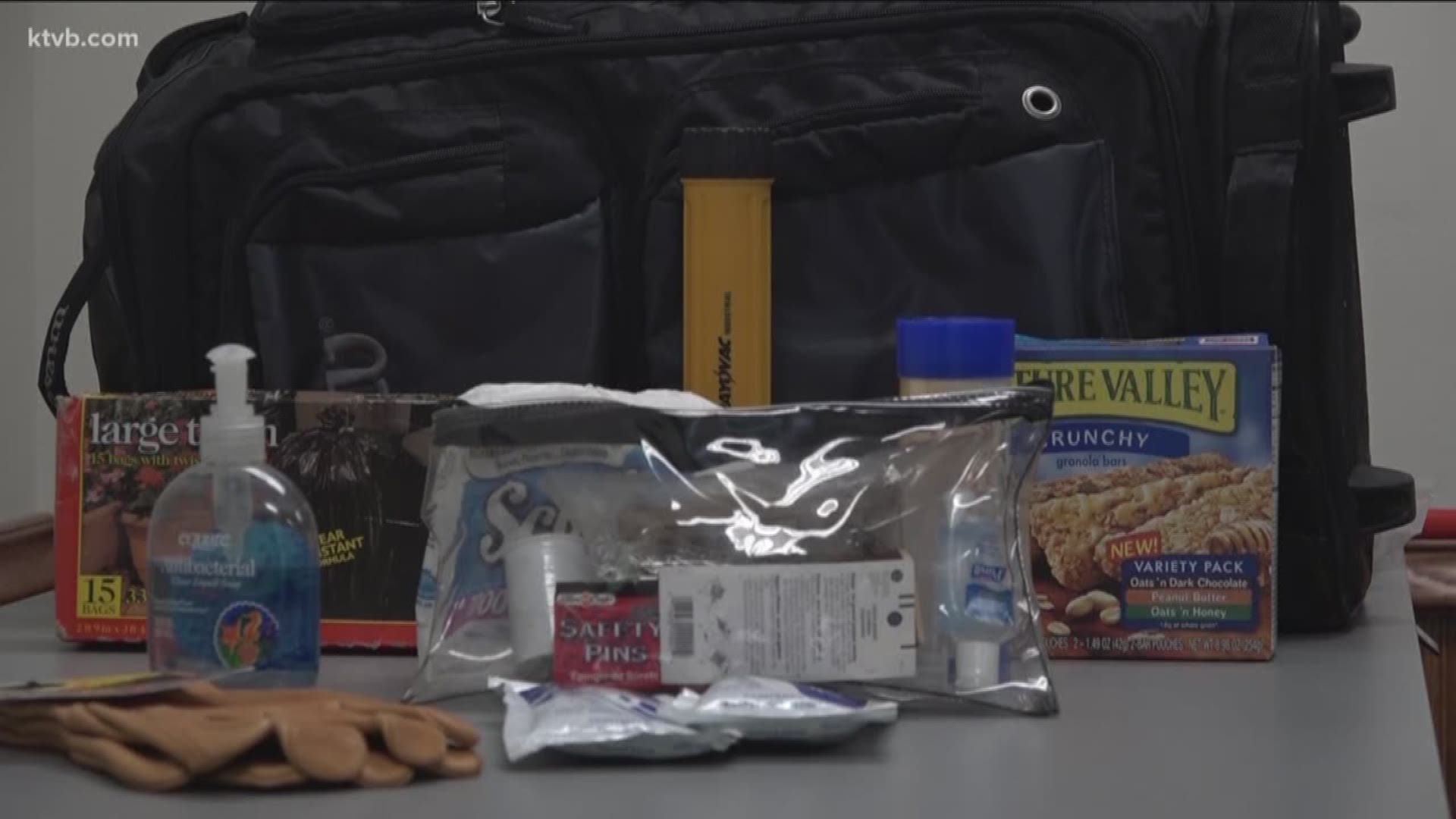BOISE, Idaho — Many families and businesses weren't prepared for the big earthquakes that shook Southern California late last week.
The 6.4 and 7.1 magnitude quakes hit near the same location on Thursday and Friday, jolting an area stretching from Sacramento to Las Vegas.
The strongest quakes to hit the area in over 20 years, they cracked buildings, caused fires, and damaged roads.
In Idaho, strong earthquakes are relatively rare; they are usually not strong enough to be felt by most of the state's residents. But strong earthquakes have shaken the state before - most notably in 1983 when a 6.9 magnitude quake struck in the Challis area.
While it's difficult to prepare for a large earthquake hitting where you live, you can be prepared for the aftermath by having an emergency kit handy. And that kit will come in handy for other types of disasters as well - from flooding to fires to severe thunderstorms.
The Idaho Office of Emergency Management in Boise suggests that everyone should be always "two-weeks prepared" by packing only essential items you would need in the event your water or electricity goes out.
All of your essentials, including prescribed medications, food, and first aid kits, should be kept in one place, preferably a waterproof bag, which can be scooped up in a hurry.
It only takes a small portion of the day to gather the recommended items (you can find a full list here) and officials say, it's better to get it done sooner, rather than later.
"It can be really easy to allow something like this to fall on the back-burner," Idaho OEM spokesperson Janice Witherspoon said. "It's important to understand we cannot predict when an accident is going to happen. All that we can do is to be prepared for it before it does."
The Idaho Office of Emergency Management suggests putting together an emergency preparedness plan for your family that includes the following:
- First-aid kit, fire alarms, fire extinguisher, and basic safety skills
- Financial preparedness plan and Emergency Financial First Aid Kit
- Evacuation Plan with a 72-hour kit (Go-bag, Bug-Out-Bag, etc.), including pets and animals
- Communications plan
- Carry adequate insurance and document property
- Prepare for power outages that may affect your home, neighborhood, or a large area
- Conduct practice drills and help others in distress
- Build up your emergency stockpile at home so you can survive for 2 weeks
For more on what to add to your emergency kit, as well as other tips on how you can prepare for unexpected disaster, check out the OEM website.

